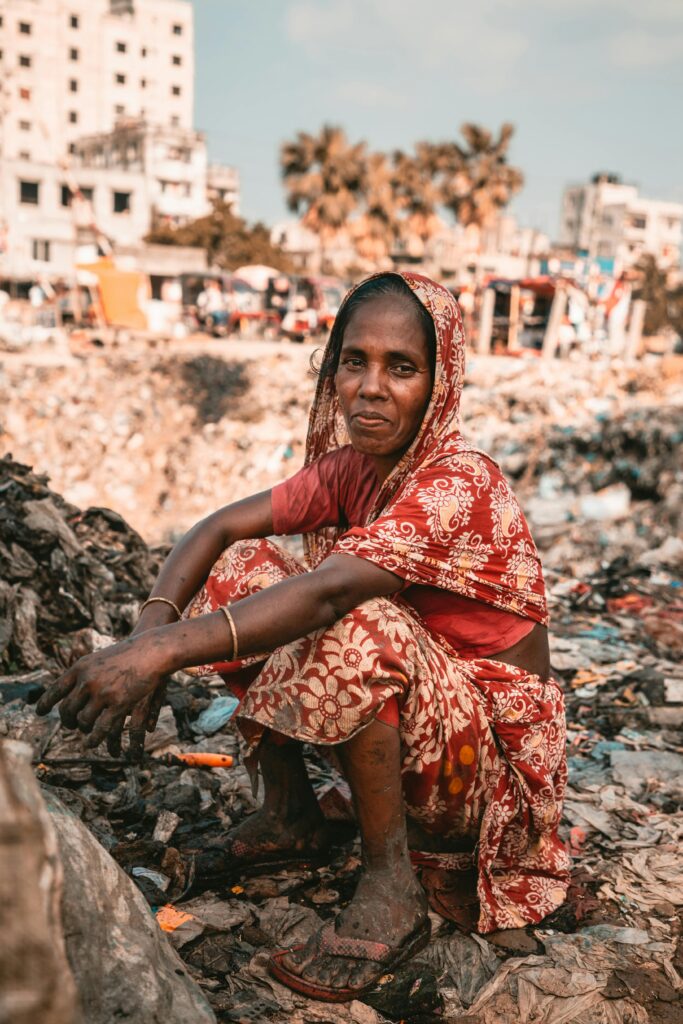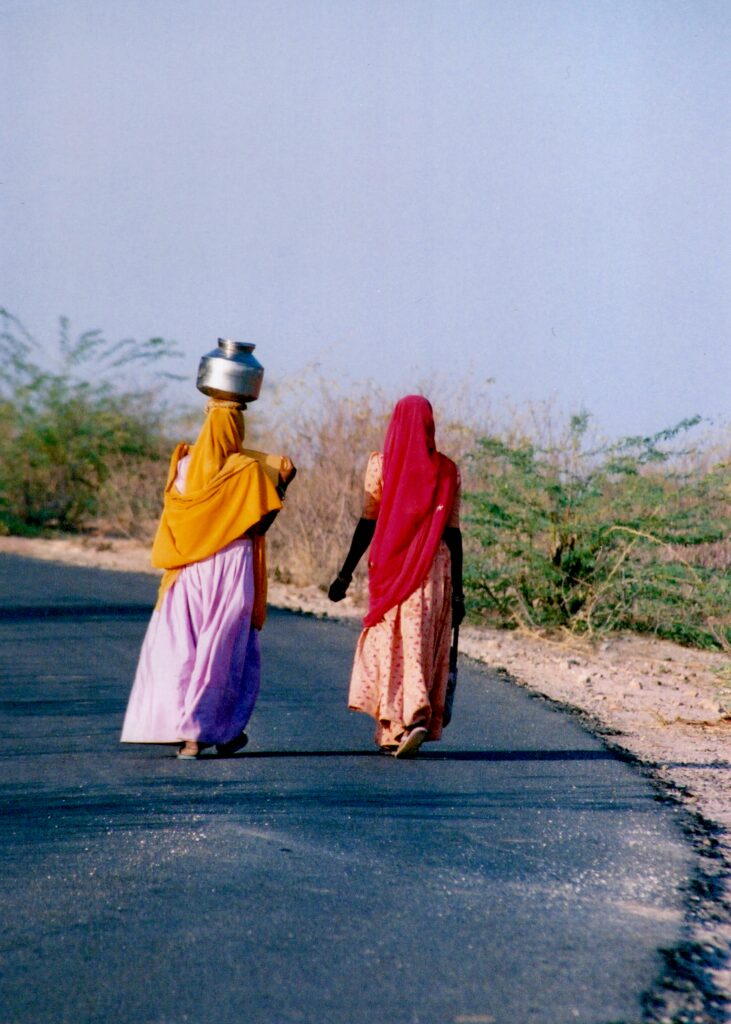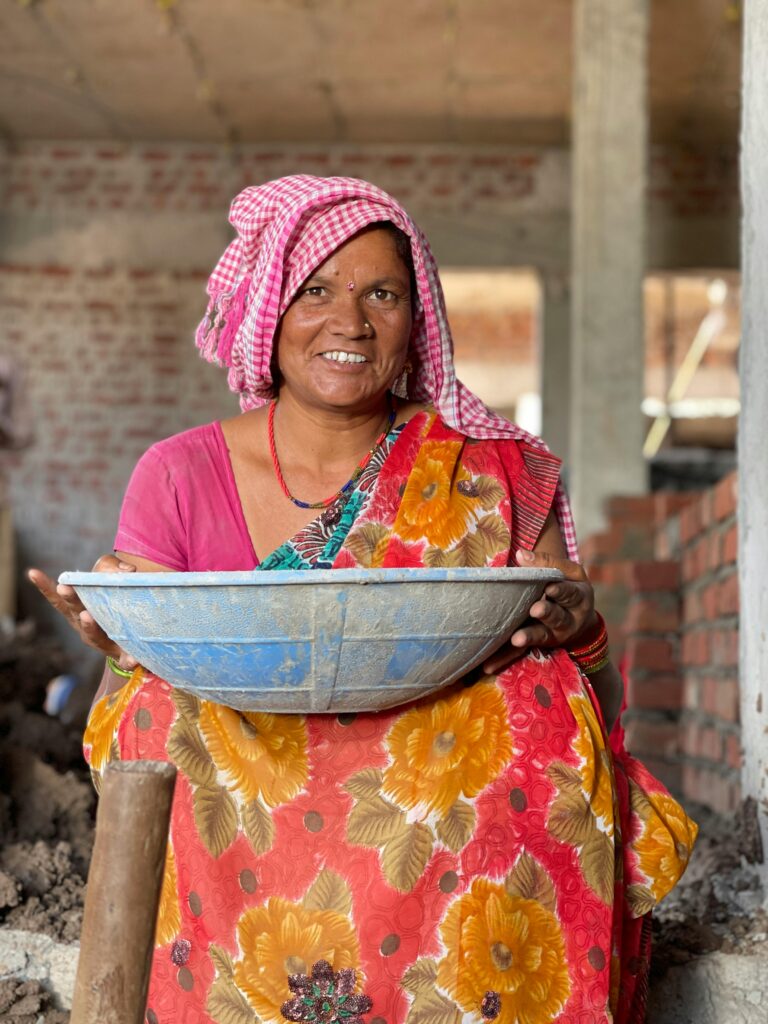Building Climate Resilience Through Gender and Circularity
Advancing climate resilience through circular economy models must prioritise women’s leadership and equitable participation.
What are the key barriers preventing women, especially in climate-vulnerable regions, from participating in or benefiting from circular economy models?
Women are at the heart of India’s circular economy, whether it’s composting organic waste, conserving seeds, or collecting and sorting recyclables. Yet, they often find themselves in the lowest-value and least secure parts of the chain.
The first barrier is informality and lack of recognition. In many cities, women make up 40-70% of waste pickers but work without contracts, safety gear, or social protection. That keeps incomes low, often between ₹6,000 and ₹8,000 ($70-90) a month, and their contributions largely invisible in policy discussions.

The second is limited access to assets and markets. Access to credit for equipment like shredders or composters is limited, and finding steady markets for their products is a constant challenge. Public procurement could help, but circular products from women-led enterprises are rarely prioritised.
The third is the skills gap. Women are rarely trained for higher-value work like IT refurbishment, recycled product quality control, or plant operations.
Circular products from women-led enterprises are rarely prioritised.
In climate-vulnerable areas, these issues become more acute. Droughts, floods, and degraded resources disrupt livelihoods, making finance scarcer, mobility harder due to care responsibilities, and training opportunities fewer. Yet, when barriers are addressed, impact follows. In Pune, the SWaCH cooperative’s 3,800 mostly women members work under municipal contracts with steady pay, safety standards, and formal recognition, proving that inclusive policy and institutional support can turn invisible work into dignified, climate-positive livelihoods.
What policy measures, financing mechanisms, or institutional arrangements could help scale gender-responsive circular initiatives in India?
India has a strong policy base for the circular economy, from the Draft National Resource Efficiency Policy to the Swachh Bharat Mission 2.0 and GeM’s Womaniya programme, but their potential is limited without coordinated action across stakeholders.
The first opportunity is in policy and contracting. Municipalities can require that women’s cooperatives and self-help groups be part of waste management contracts, Extended Producer Responsibility (EPR) systems, and material recovery facility operations.
The second is financing. Institutions like Small Industries Development Bank of India and National Bank for Agriculture and Rural Development can offer blended finance products for women-led circular Micro, Small and Medium Entreprises (MSMEs), combining low-interest loans for equipment with performance-linked grants tied to diversion targets, safety standards, and fair wages.


Right: Women can lead in the circular economy- from e-waste refurbishment to bioeconomy skills and green construction. Photo: Nishant Aneja / Pexels
The third is institutional design. City-level Circular Economy Cells (living labs) can bring together government, industry, and women’s collectives to map enterprises, match them to tenders, provide technical assistance, and resolve operational challenges.
These measures work best when accountability is built in. Third-party monitoring of contracts and participatory review platforms where women can directly share feedback with officials ensure that initiatives don’t just launch, they scale and sustain impact.
In what ways can circular models enhance the adaptive capacity of women in drought-prone, flood-affected, or degraded-resource regions?
Circular models can do more than reduce waste, they can directly strengthen women’s capacity to adapt to climate shocks.
In Gujarat, the Bhungroo system stores excess monsoon water underground, providing irrigation for up to eight months. Women’s groups managing these systems have increased crop yields by 25–40% and collective incomes by ₹15,000–₹20,000 annually.
In Tamil Nadu’s Kolli Hills, women-led seed banks conserve over 20 millet varieties, cutting post-disaster recovery time from months to days and reducing input costs by up to 30%.
Circular models can do more than reduce waste, they can directly strengthen women’s capacity to adapt to climate shocks.
In Assam, women’s self-help groups have turned flood-damaged organic waste into compost, improving soil health for the next planting season and creating extra seasonal income of ₹5,000–₹7,000 per household.
Scaling these models will require structured action. Circular Economy Cells could map climate-vulnerable wards, prioritise women-led enterprises for resilience-focused contracts, and bundle funding from municipal budgets, CSR programmes, and climate adaptation schemes. Standardising resilience indicators, such as recovery time after shocks or income gains from restored resources and tracking them annually would ensure adaptation benefits are measured, valued, and used to shape future investments.
What skills and training are needed to prepare women for leadership in emerging circular economy sectors like e-waste, bioeconomy, or green construction?
High-value opportunities in the circular economy are expanding rapidly, and women should be at the forefront of this growth. In the e-waste sector, skills such as refurbishment, data wiping, and safe dismantling can generate three to four times more value than dismantling for scrap, yet training for women in these areas remains limited. In the bioeconomy, operating biogas plants, ensuring bio-fertiliser quality, and processing biomass are becoming core competencies. In green construction, as more cities enforce construction and demolition waste recycling mandates, skilled operators will be needed to produce recycled aggregates and run recycling plants.
Training on its own isn’t enough, it must be linked to market-ready opportunities. Certified women-led teams could be pre-qualified for municipal or EPR contracts, ensuring their skills translate into income and leadership roles. Circular Economy Cells could partner with the Skill Council for Green Jobs, the National Skill Development Corporation, and local institutes to deliver modular, on-site training followed by direct bidding support.
Models like the Skill Impact Bond have shown how public-private partnerships can deliver training that leads to measurable job outcomes. Embedding similar performance-linked models in the circular economy, with gender audits to track contract awards and revenue flows, would ensure women move from being participants in training to leaders in enterprises.
What indicators can help track gender equity in circular economy projects – beyond just participation numbers?
Counting women is only the first step. We also need to measure how their situation has changed. This means tracking median income growth, the share of contract revenue reaching women, and whether their earnings meet living income benchmarks. Leadership is another key metric, the proportion of women in supervisory roles, holding contracts, or influencing procurement decisions.
Safety and benefits must be part of the picture. Are women receiving PPE? Are they covered by social security and maternity benefits? Do they have access to regular health check-ups, safe transport, and childcare facilities? Time saved through closer facilities or reduced travel can also be a valuable measure.
Counting women is only the first step. We also need to measure how their situation has changed.
Finally, resilience indicators help link circularity to climate adaptation. These include the speed of recovery after a climate shock, hectares under climate-resilient crops, and households benefiting from systems like Bhungroo or seed banks. Embedding these indicators into municipal surveys, enabling digital reporting on platforms like GeM, and verifying through third-party gender audits – combined with participatory platforms for direct feedback, would make institutions accountable while ensuring women’s voices shape both policy and practice.
